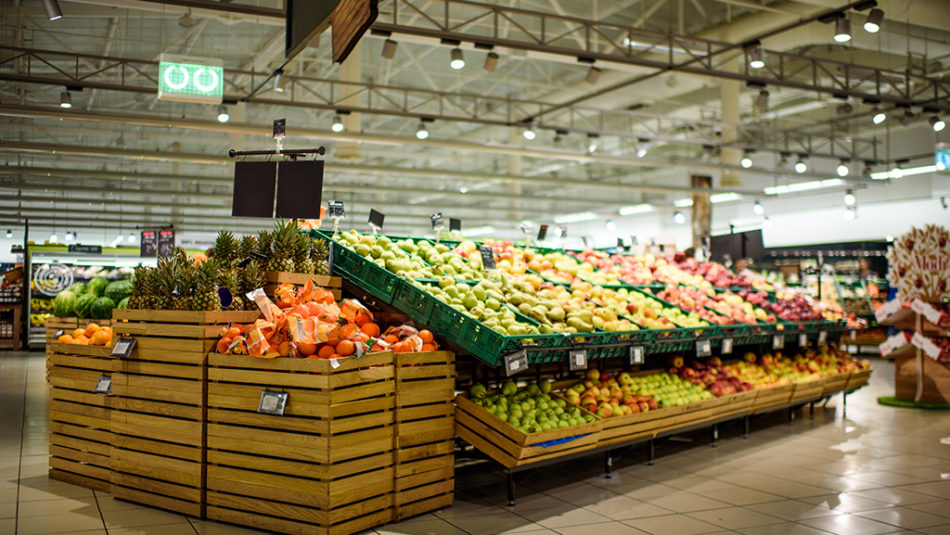
How Supermarkets Are Dealing With an Unprecedented Rate of Change in the Industry
John Paul Getty said, “In times of rapid change, experience could be your worst enemy.” That sentiment certainly applies in the supermarket industry right now. Changes keep coming faster and faster, and thinking that what has worked well in the past will work well now is a recipe for disaster. The industry seems to have taken this to heart, and they are adapting to changes at a rapid pace, changes in customer behavior and demands, and changes in the environment. Here is a quick look at what’s happening.
What Is Walmart Up To?
Walmart has navigated (and sometimes caused) dramatic changes in the industry over the years. They are weathering the current upheaval equally well, and appear to be using it to gain even greater dominance. During their 3rd Quarter earnings release, they announced grocery sales were up nearly 10%. Some of this was fueled by inflation, to be sure, but Walmart also benefited from consumers seeking out stores offering lower prices, or at least a lower price perception. Consequently, they were reported to have gained market share in grocery. Supply chain issues and labor costs have eaten into profits, however, and consolidated gross profits dropped 12 basis points, while their operating expense rate rose 20 basis points.
Walmart is definitely not waiting to make changes to their operations to react to the challenges facing retailers. When normal trans-Pacific shipping became unreliable, they chartered ships to ensure their shipments would arrive on time. They have also diverted ships to less congested ports, added capacity to their fulfillment and distribution centers, and hired 20,000 workers dedicated to the supply chain.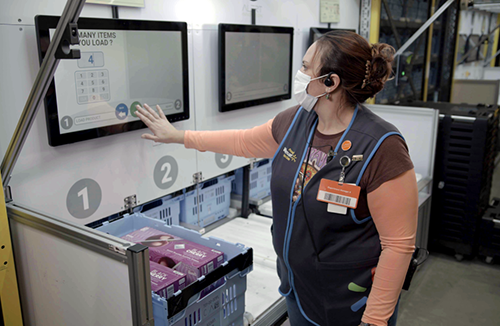 In another radical move, Walmart is also selling its customer delivery platform to other businesses. Called Walmart GoLocal, the system gives other businesses access to the retailer’s delivery capabilities. Home Depot has reportedly signed on. Walmart’s fulfillment service can reach 70% of US consumers. They received a lot of press when they invested in drone and autonomous vehicle startups, but they have also been diligently working on less esoteric aspects of the delivery business. They have added automated micro-fulfillment centers to dozens of locations, as well as automated drive-thru pickup capabilities at some stores.
In another radical move, Walmart is also selling its customer delivery platform to other businesses. Called Walmart GoLocal, the system gives other businesses access to the retailer’s delivery capabilities. Home Depot has reportedly signed on. Walmart’s fulfillment service can reach 70% of US consumers. They received a lot of press when they invested in drone and autonomous vehicle startups, but they have also been diligently working on less esoteric aspects of the delivery business. They have added automated micro-fulfillment centers to dozens of locations, as well as automated drive-thru pickup capabilities at some stores.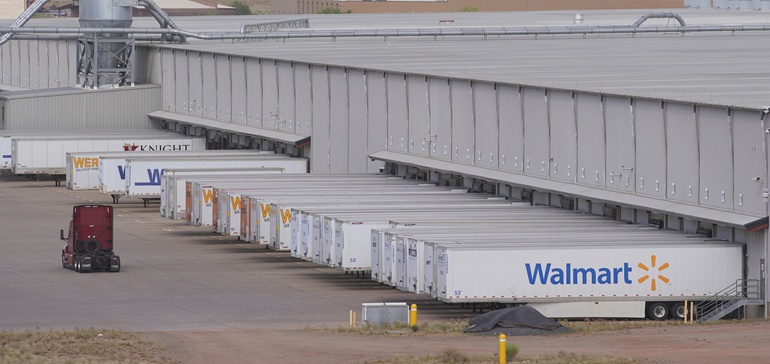 In October, Whole Foods added a $9.95 delivery fee on orders placed through Amazon Prime. Walmart immediately responded with a rebate of $9.95 for anyone who signed up for their Walmart + subscription service that day. Their email had a little fun at the expense of Whole Foods, reading, “Because customers deserve a grocery delivery service that won’t leave a Whole in their wallet for delivery fees…whoops, typo.”
In October, Whole Foods added a $9.95 delivery fee on orders placed through Amazon Prime. Walmart immediately responded with a rebate of $9.95 for anyone who signed up for their Walmart + subscription service that day. Their email had a little fun at the expense of Whole Foods, reading, “Because customers deserve a grocery delivery service that won’t leave a Whole in their wallet for delivery fees…whoops, typo.”
What Is Everyone Else Doing?
In late August, Washington DC consumers were abuzz over an Amazon Fresh store opening within a few blocks of an existing Whole Foods. Amazon Fresh stores use the Amazon app so customers can just pick up their groceries, bag them and walk out of the store, with no need for a traditional checkout process. Despite this advantage, Amazon Fresh prices are closer to traditional supermarket pricing (and product assortment), while Whole Foods is distinctly premium priced and focused on organics and healthier options. Given the close proximity of the stores, speculation arose that this is a test to see if the stores can co-exist, or possibly a sign that Amazon Fresh is Amazon’s growth vehicle in the industry, with Whole Foods taking a back seat. “Whole Foods is a small segment of … grocery,” said Brian Yarbrough, senior analyst at Edward Jones. “Amazon Fresh is going after a more mainstream market.” To underline that they have a different customer base, a survey found that only 13.6% of customers had visited both stores in the month of June. However, there are no signs that Amazon plans to curtail growth of Whole Foods either, with 43 new locations across the country in the works.
Given the close proximity of the stores, speculation arose that this is a test to see if the stores can co-exist, or possibly a sign that Amazon Fresh is Amazon’s growth vehicle in the industry, with Whole Foods taking a back seat. “Whole Foods is a small segment of … grocery,” said Brian Yarbrough, senior analyst at Edward Jones. “Amazon Fresh is going after a more mainstream market.” To underline that they have a different customer base, a survey found that only 13.6% of customers had visited both stores in the month of June. However, there are no signs that Amazon plans to curtail growth of Whole Foods either, with 43 new locations across the country in the works.
Instacart has grown dramatically during the pandemic, but they are aggressively moving to find new ways to enhance the customer shopping experience. They recently acquired Caper AI, a leader in smart shopping cart and AI based checkout technology. Caper’s carts have screens that help shoppers navigate the store and make purchase suggestions based on what is in their cart. Their carts have scanners and detection systems that can accurately identify and weigh random weight items (loose fruits and vegetables), allowing customers to check out right in the cart. In the short term, Instacart order fulfillment shoppers will be able to use these carts to gather customers’ orders without going through checkout, speeding fulfillment with less disruption of regular customers.
Kroger is touting its private programmatic marketplace as a way for CPG’s to take advantage of Kroger’s years of customer data in the post-cookie world. Kroger is making a major play for CPG marketing dollars, realizing that their customer data — they serve over 60 million households annually — is going to be even more valuable in the near future, as first-party data becomes essential for targeting. They are striving to make their service as frictionless as possible, allowing clients to use the demand-side platform of their choice, and giving them self-service access to Kroger’s targeting solutions and metrics.
Grocery Outlet, an extreme value outlet with all independently-owned stores, is testing a tie-in with Instacart. The test is in 68 of their 417 stores. Most Grocery Outlets are on the West coast. The test stores are all in California. “The pandemic has changed the retail experience and how people shop—advancing ecommerce by a decade in just a year and a half,” said Grocery Outlet CEO Eric Lindberg. Adding the convenience of Instacart may bring in new customers who have not tried Grocery Outlet before. On the other hand, many retailers view Instacart as a necessary evil, claiming that they barely break even on Instacart orders. This will be particularly challenging for a low-price operator like Grocery Outlet.
Food And Social Responsibility
An area of rapid change that should be of concern for all involved in the food supply chain is the surge in consumer awareness of social responsibility. Consumers are willing to change their purchase habits in favor of companies exhibiting social responsibility, an opportunity for growth for those who are willing to effect real change in their operations.
Reducing food waste continues to be an area of social responsibility embraced by supermarkets. Approximately $37 billion worth of food is thrown out in the US each year, and is a contributor to climate change, with 70 billion tons of greenhouse gases estimated to be generated by food waste annually. Giant Food recently announced a tie-in with Flashfood, a company processing food nearing its best-by date. Three Giant Food test stores will have Flashfood locations inside the store. Customers browse deals on the Flashfood app, then pick up their purchases at the Flashfood zone. Giant Food has announced a plan to achieve a Zero Waste Diversion goal by 2025.
Del Monte is also getting into the upcycled food movement with Upcycled Food Association’s certification on its Blue Lake Petite Cut and Farmhouse Cut Green Beans. The beans are too small or have imperfections that keep them from use in the Del Monte flagship brand products and would otherwise be composted or used for animal feed.
Plant-forward foods are in the news every day, with new product offerings launching at a dizzying pace. In November alone, Taste Republic partnered with Beyond Meat for their ravioli product, while Impossible Foods paired with Buitoni to launch meatballs, Like Chick’n Wings debuted in Sprouts, and Barvecue added carnitas to their plant-based line. Impossible Chicken Nuggets are launching in Walmart, Kroger, Albertsons, Safeway, Shoprite, Giant and Gelsons, and will be in 10,000 locations by the end of the year. They follow Kellogg’s Incogmeato chicken tender into the marketplace, while Beyond Meat’s product has launched in Foodservice.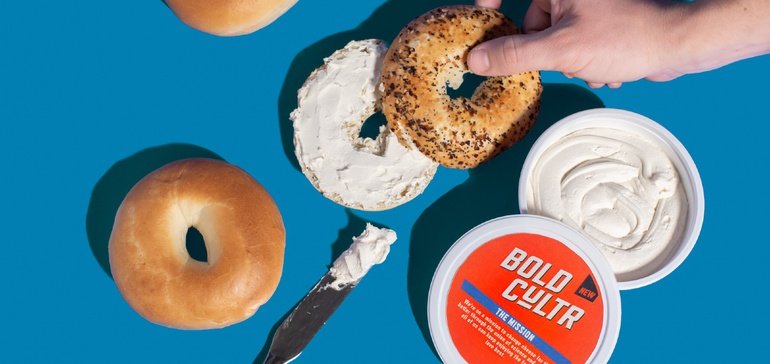 In the Dairy aisle, General Mills recently announced the launch of Bold Cultr dairy-free cheese brand. Initially sold on their ecommerce site and some Hy-Vee stores, the product “uses precision fermentation to create dairy proteins that are identical to those that come from cows.”
In the Dairy aisle, General Mills recently announced the launch of Bold Cultr dairy-free cheese brand. Initially sold on their ecommerce site and some Hy-Vee stores, the product “uses precision fermentation to create dairy proteins that are identical to those that come from cows.”
Also going dairy-free, Hershey is testing Hershey Oat-Made Plant-Based Chocolate Confection. The dairy-free confectionery market has a lot of room for growth. Only 5.6% of all chocolate products have vegan label claims.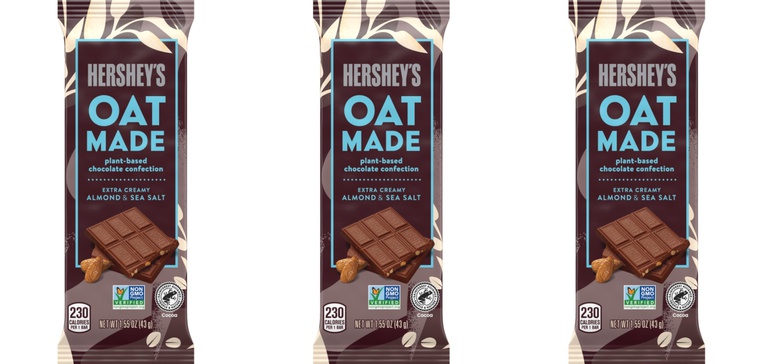 Are there, however, clouds on the horizon for plant-based meats? Beyond Meat just missed their sales target, even though they still posted sales growth of 12.7%. Disruption in foodservice was a big part of the problem, along with labor shortages, the Delta variant and supply chain issues. Retail sales were flat. Sales slowdowns of any kind in the category are news, given the unbridled growth of recent years. Maple Leaf Foods and Kellogg’s Morningstar Farms reported sales declines in recent quarters. Long term, plant-based meat substitutes are here to stay, but consumers may be looking for more natural alternatives than the ones that are available now, which have long ingredient lists featuring unrecognizable chemicals.
Are there, however, clouds on the horizon for plant-based meats? Beyond Meat just missed their sales target, even though they still posted sales growth of 12.7%. Disruption in foodservice was a big part of the problem, along with labor shortages, the Delta variant and supply chain issues. Retail sales were flat. Sales slowdowns of any kind in the category are news, given the unbridled growth of recent years. Maple Leaf Foods and Kellogg’s Morningstar Farms reported sales declines in recent quarters. Long term, plant-based meat substitutes are here to stay, but consumers may be looking for more natural alternatives than the ones that are available now, which have long ingredient lists featuring unrecognizable chemicals.
There’s one more retail trend that is making news outside the supermarket industry right now. Retailers are managing their costs and maximizing existing foot traffic by utilizing the store-within-a-store concept. Ulta is now in 58 Target Stores, and Toys R Us is in Macy’s. Many supermarkets have Starbucks branded stores in them. What other retailers might they co-brand with? CVS just announced that they will close 900 stores in the next three years. Would they be a candidate for co-branded pharmacies? Maybe not, but one thing we can be sure of, the pace of change is not going to slow down.
As author Jennifer Jones said, “Learning how to respond to and master the process of change-and even to excel at it-is a critical leadership skill for the twenty-first century. Constant, rapid change will be a fact of life for all of us.” Leaders in the supermarket industry will no doubt be charged with that task. Which means, unfortunately, they’ll be living examples of this thought from Ron Suskind, “Rapid change, accommodating it can be one of the great human capacities. But living through it can be the stuff of stress and suffering.”






